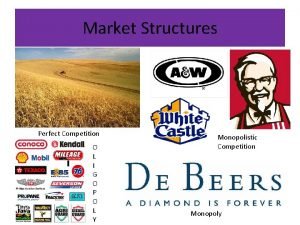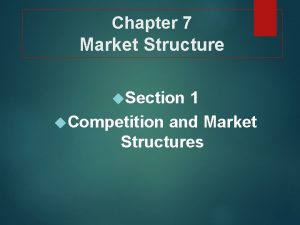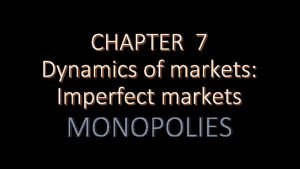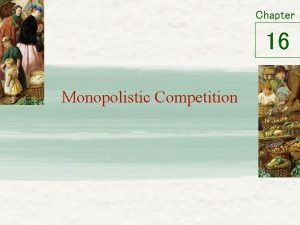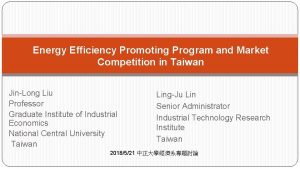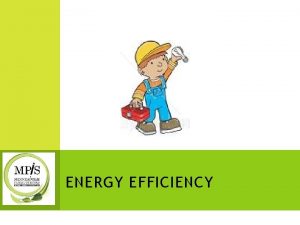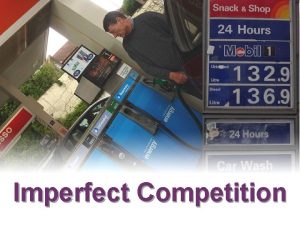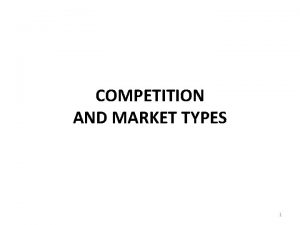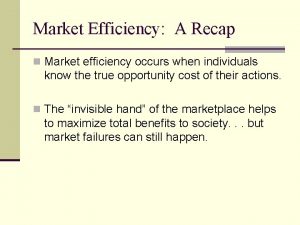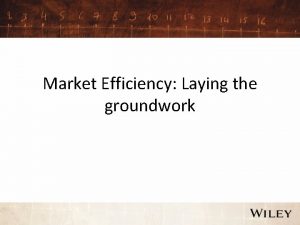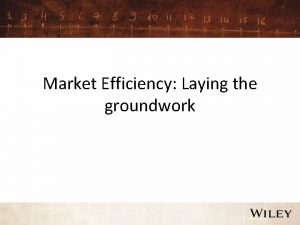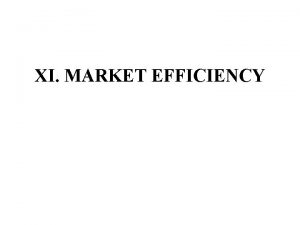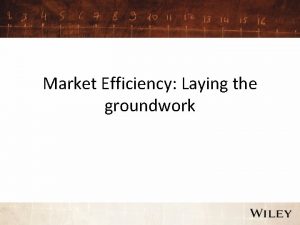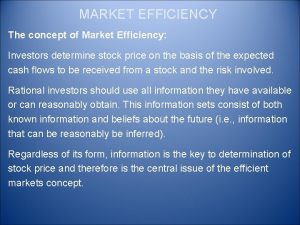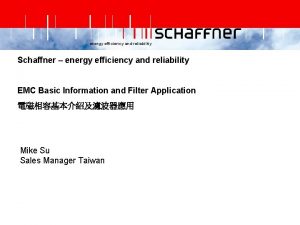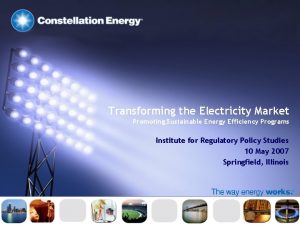Energy Efficiency Promoting Program and Market Competition in

















- Slides: 17

Energy Efficiency Promoting Program and Market Competition in Taiwan Jin-Long Liu Professor Graduate Institute of Industrial Economics National Central University Taiwan Ling-Ju Lin Senior Administrator Industrial Technology Research Institute Taiwan 2018/5/21 中正大學經濟系專題討論

The Motivation

�Following the Paris Agreement, changing the way of producing and consuming energy have been the most important issues over the next decades. �To increasing energy efficiency and conservation is one of the majority methods to the issues of the energy uses. �The improvement of the energy efficiency is regards as a win-win policy. (Allcott and Greenstone, 2012) �Energy efficiency standards and labelling (EESL) programs have been widely used to promote the investment on the energy-efficient home appliances and equipment. �More than 80 countries around the word and 50 different types of appliances and equipment have

�In the past decade, unit average efficiency improvements has showed an increases of 23% for the room air conditioners, 21% for the washing machine, and 16% for the refrigerators. (IEA, 2017) �The EESL program has an average of 30% immediate improving effect while it was implemented. (IEA, 2016) �The studies for the effect of EESL program included: US Mills and Schleich (2010)– Germany Li et al. (2016) ; Davis and Metcalf (2016) ; Houde and Aldy(2017) -Miyazaki(2016) ; Mizobuchi and Takeuchi (2016) -- Japan � None of previous studies discussed the effects of market competition.

The Issue Does the policy promote the market competition?

The Program in Taiwan

Taiwan Energy Efficiency Program l Compulsory Energy Efficiency Rating Label Program �Starting from 2010 �Originally, applied to air conditioners, refrigerators, automobiles, and motorcycles. l Major home appliances are applied so far. l Energy efficiency rating level 5 (most energy consuming) 1 (most energy saving)

The Method and Data


The Results






Conclusion �The market structure underlying the efficiency label I and II (more energy saving) is toward to perfect competition on the system, however, the market structure underlying the efficiency label IV and V (less energy saving) is toward to a tight oligopoly. �Overall, the energy efficiency rating labelling program in Taiwan shows the effects of promoting the market competition.

Thanks!
 Renewable energy and energy efficiency partnership
Renewable energy and energy efficiency partnership Allocative efficiency and productive efficiency
Allocative efficiency and productive efficiency Seec saudi
Seec saudi Allocative efficiency vs productive efficiency
Allocative efficiency vs productive efficiency Allocative efficiency vs productive efficiency
Allocative efficiency vs productive efficiency Market segmentation market targeting and market positioning
Market segmentation market targeting and market positioning Monopoly vs perfect competition
Monopoly vs perfect competition Perfect competition vs monopolistic competition
Perfect competition vs monopolistic competition Pure competition vs monopolistic competition venn diagram
Pure competition vs monopolistic competition venn diagram Perfect competition vs monopolistic competition
Perfect competition vs monopolistic competition Leader challenger
Leader challenger Oligopoly vs monopoly examples
Oligopoly vs monopoly examples Chapter 7 lesson 1 competition and market structures
Chapter 7 lesson 1 competition and market structures Difference between perfect competition and monopoly
Difference between perfect competition and monopoly Difference between perfect competition and monopoly
Difference between perfect competition and monopoly Energy energy transfer and general energy analysis
Energy energy transfer and general energy analysis Energy energy transfer and general energy analysis
Energy energy transfer and general energy analysis Promote service arrange decide
Promote service arrange decide











